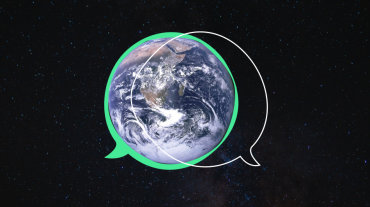Greenwashing: How to Spot Deceptive Environmental Claims
Here is everything you need to know about the issue and how to spot deceptive claims.
100% biodegradable. Eco-friendly. Plastic-free. Organic. “We believe…” You’ve probably seen these phrases written on various products or in the marketing materials of all kinds of companies. As consumers have become increasingly aware of the influence their purchasing decisions have on the environment, so have companies looking to capitalize on this fact.
Enter Greenwashing: the act of misrepresenting a product or service to make it seem better for the environment than it really is.
What exactly is Greenwashing?
The term ‘greenwashing’ was coined in the 1980s by American environmentalist Jay Westerveld. In a 1986 paper he remarked on an instance when a Fiji resort encouraged their guests to reuse towels, while at the same time expanding their business with little concern for the surrounding environment.
Ever since the term has been used to describe misleading or deceptive actions or statements made by companies to make their products and services seem more environmentally friendly than they actually are. This is done to ease consumers’ anxiety around climate change and their own impact on the environment. Many modern consumers would rather spend their money on a product that claims it was created sustainably rather than one that was not.
Some examples of brands engaging with greenwashing can include:
Suggestive imagery: Think green and natural landscapes indicating a product is sustainably sourced without any real proof. Some companies go so far as to include labels that look like certifications at first glance, but are completely meaningless.
Selective disclosure: Highlighting positive environmental news and facts about their products without mentioning anything negative.
Symbolic actions: A company taking part in a climate march or engaging in other minor positive actions while doing little to address their real environmental impact.
Lack of proof: Making claims about sustainability or eco-friendliness without any research or evidence to back it up.
Vague wording: Using broad statements and buzzwords that don’t mean anything but make the product look and seem eco-friendly. Some companies also use what’s been coined as “greenspeak” — phrases which sound impressive but lack any officiality. Examples include “made from 100% natural ingredients” or “Bio product.”
Greenwashing examples
There are a number of actions that fall under the ‘greenwashing’ banner. These can include mislabeling, burying problematic actions in the fine print or downright lying about impact. Some of the world’s biggest and most successful businesses have been guilty of the practice. Here are some of the most egregious.
Volkswagen
In 2015, Volkswagen faced a major scandal when it was revealed that they had installed software in their diesel vehicles to cheat emissions tests. Despite marketing their cars as "clean diesel" and therefore environmentally friendly, the vehicles were emitting harmful pollutants way above legal limits.
IKEA
The largest wood consumer in the world, furniture company IKEA came under fire in 2020 when they were called out for illegal logging practices. A review of IKEA’s supply chain for some of their most popular children’s beds revealed the wood likely came from Russian logging companies in Siberia that repeatedly violated Russian environmental laws designed to protect these forests. Given the amount of material on IKEA’s commitment to sustainability, the oversight can be considered greenwashing.
BP
British Petroleum (BP) launched a high-profile "Beyond Petroleum" advertising campaign in the early 2000s, which emphasized their commitment to renewable energy and environmental responsibility. However, the company continued to be primarily focused on fossil fuel extraction, and was involved in the Deepwater Horizon oil spill in 2010 which had devastating environmental consequences.
H&M
Fast-fashion has never had a good reputation for employing sustainable practices, and H&M tried to combat this using a scorecard system to inform customers about the environmental impact of their products. Unfortunately, it was revealed that more than half of these scorecards were misleading, portraying many items as more environmentally friendly than they actually were.
KLM
The airline was sued for its misleading “Fly Responsibly” campaign which encouraged consumers to schedule virtual meetings when possible, take the train, and pack lighter to offset the carbon dioxide emissions from the flight. However the suit argued that the airline could not reduce their carbon footprint without reducing the number of flights entirely.
Why is Greenwashing so common — and why do businesses still get away with it?
Anxiety around the climate crisis has meant that consumers are way more conscious and considerate when making purchasing decisions. A recent report showed that 4 out of 5 people would rather purchase from a consumer brand with a positive approach to sustainability, while 60% would opt to pay more money for a product with sustainable packaging. This has driven a lot of companies to make bold claims about their ‘green’ initiatives in order to improve their bottom line, and it’s gotten a lot harder to spot over the years.
Unfortunately, the practice is still incredibly common. A 2021 ‘sweep’ of EU websites making green claims revealed a whopping 42% could not be backed up. The report pointed out that most claims were exaggerated, false, deceptive or could potentially qualify as unfair commercial practices under EU rules.
However, companies accused of greenwashing tend to feel the wrath of the consumer one way or another in the end. Some studies have shown that putting profit over people and the environment can damage customer trust and brand reputation, with customer satisfaction dropping 34% if accused.
The problem has gotten so bad that major steps are being taken to combat it on a legislative level. In March 2023, the EU proposed a directive to combat greenwashing. The directive will ask companies to carry out assessments on any environmental claims and will introduce penalties to those that fail.
How to spot Greenwashing
It’s gotten a lot harder to spot greenwashing in the wild. It’s often presented with nuanced or vague language designed to mislead consumers. However, the best way to combat a problem is to learn more about it and challenge it head on. Here are some tips for spotting deceptive environmental claims.
Examine claims carefully
Look for vague or undefined terms like "eco-friendly," "natural," or "green" without specific details or certifications to back them up. Be skeptical of exaggerated claims, such as products being "100% green" or anything with the word “eco” attached to it. A big red flag.
Check the label for legitimate certifications from third-parties
There are several recognised organizations consumers can trust when it comes to sustainability and the environment. Look for certifications like Energy Star, Fair Trade, USDA Organic, or the Forest Stewardship Council. Try and verify them if possible.
Do your research
A quick online search should tell you everything you need to know about a brand and its history. You can check for any previous environmental violations and take a look at their overall sustainability practices. Seek out transparent, comprehensive and if possible third-party reports. Look for goals, progress, and metrics.
Take packaging and marketing materials with a pinch of salt
Beware of products with excessive or misleading green imagery on their packaging. Sometimes, companies use the color green, leaves, or eco-themed imagery to create a false impression of sustainability. Research if there are any contradictions between a company's marketing materials and their actual practices.
Look for independent reviews and opinions
Read reviews, opinions, and articles from independent sources, environmental organizations, or experts in the field. They may provide insights into a company's true environmental impact and practices. Furthermore, if something seems too good to be true or doesn't align with your understanding of sustainability, it could be a sign of greenwashing.


